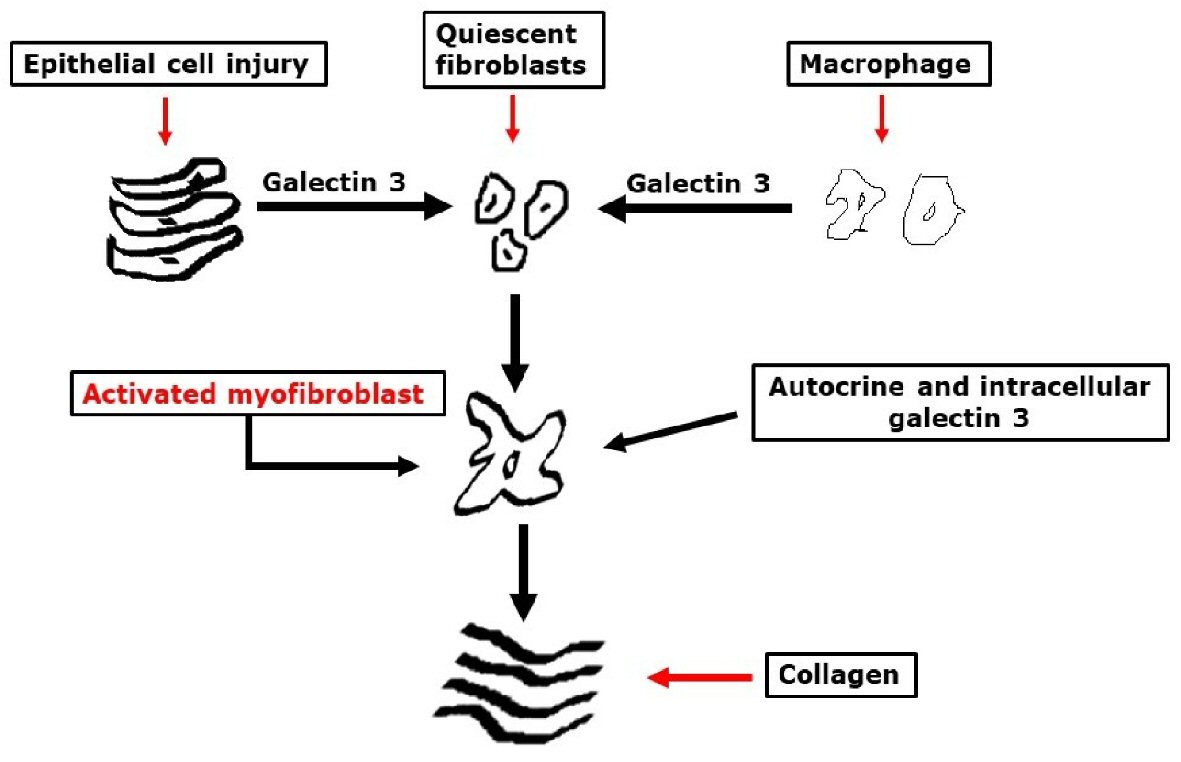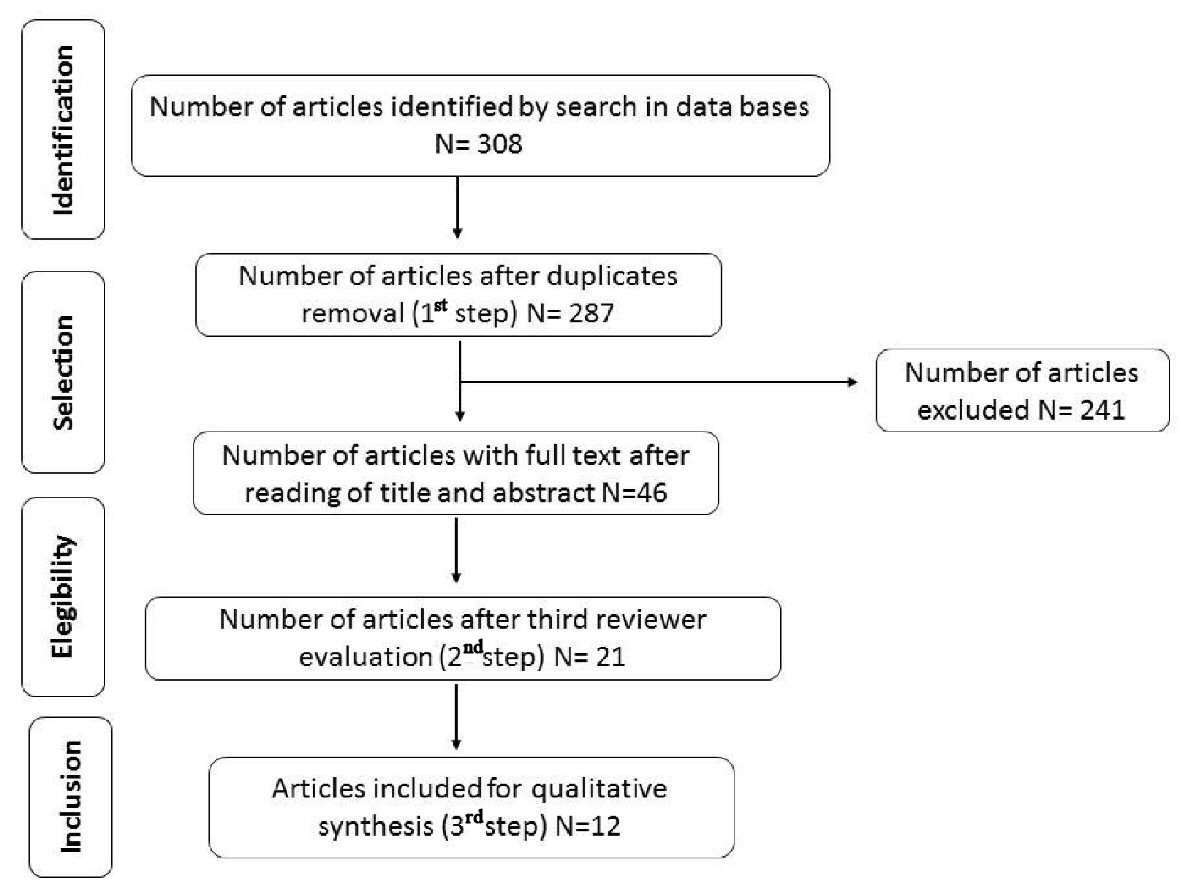
Figure 1. Potential mechanistic roles of galectin-3 in tissue fibrogenesis.
| Journal of Clinical Medicine Research, ISSN 1918-3003 print, 1918-3011 online, Open Access |
| Article copyright, the authors; Journal compilation copyright, J Clin Med Res and Elmer Press Inc |
| Journal website https://www.jocmr.org |
Review
Volume 12, Number 10, October 2020, pages 647-654
How Can Galectin-3 as a Biomarker of Fibrosis Improve Atrial Fibrillation Diagnosis and Prognosis?
Figures


Table
| Author and year of publication | LE | GR | Type of study | Sample size | Parameters age (mean ± SD) | Comparison of Gal-3 levels | Results and P value | Conclusions |
|---|---|---|---|---|---|---|---|---|
| ang/mL; bpg/mL. LE: level of evidence; GR: grade of recommendation; Gal-3: galectin-3; AF: atrial fibrillation; SD: standard deviation; AMI: Acute myocardial infarction. | ||||||||
| Stanojevic et al, 2019 [17] | 3B | B | Case-control | 51 | 66.33 ± 11.34 | 8.41 ± 2.76 vs. 10.53 ± 2.75a, P = 0.011 | Patients with AF presented higher levels of Gal-3 when compared to those without AF (P < 0.05). | Patients with AF presented higher levels of Gal-3 than those without AF. Gal-3, as a fibrosis marker, could be a potential target in the treatment of patients with AMI. |
| Kang et al, 2018 [18] | 3B | B | Case-control | 30 | 57.9 ± 1.09 (control G)/67 ± 3.02 (case G) | 0.51 ± 0.03 vs. 1.05 ± 0.08a, P < 0.05 | Elevation in the levels of Gal-3 is associated with the population with AF (P < 0.05). | Gal-3 plays an important role in myocardial fibrosis. Its inhibition could prevent myocardial fibrosis, effectively preventing myocardial remodeling. |
| Berger et al, 2017 [19] | 2B | B | Prospective cohort | 98 | 59.8 ± 8.6 | 194 vs. 126a, P = 0.011 | The increase in the level of Gal-3 after ablation was associated to a higher AF recurrence rate during the 2-year period after ablation (P = 0.014). Gal-3 is an independent predictor for AF (P = 0.035). | Circulating Gal-3 alterations above the baseline value can reflect the change in the arrhythmogenic substrate and predict the results of thoracoscopic ablation for AF. |
| Fashanu et al, 2017 [12] | 2B | B | Prospective cohort | 8,436 | 61.4 ± 5.4 (Q1)/62.2 ± 5.6 (Q2)/62.7 ± 5.6 (Q3)/64 ± 5.7 (Q4) | 1.37 (1.05 - 1.78) vs. 1.67 (1.29 - 2.16)a, P = 0.004 | Gal-3 was associated with all risk factors for AF. High levels of Gal-3 were associated with increased risk of developing AF (P < 0.0001). | High levels of Gal-3 are associated to an increase in the incidence of AF in the general population. |
| Hernandez-Romero et al, 2017 [20] | 1B | A | Prospective cohort | 115 | 65.1 ± 9.5 | 14.25 ± 4.15 vs. 17.61 ± 6.84a, P = 0.02 | There is difference in levels of Gal-3 in patients with and without AF (P = 0.05). There is association between Gal-3 and fibrosis (P = 0.02). Elevated serum levels of Gal-3 are considered an independent predictor for fibrosis (P = 0.022). | Gal-3 is a biomarker of cardiac fibrosis. Atrial fibrosis is considered the only independent predictor for the development of AF. |
| Chen et al, 2016 [21] | 3B | B | Case-control | 131 | 68 ± 11(new AF)/71 ± 12 (chronic AF) | 9.4 ± 3.3 vs. 8 ± 3.3a, P = 0.04 | Patients with new onset AF have elevated levels of Gal-3 when compared to patients with chronic AF (P = 0.05). | Gal-3 can be used as a biomarker for AF chronicity. Elevated levels of Gal-3 can stratify these patients in risk groups for the development of AF. |
| Clementy et al, 2016 [22] | 2B | B | Prospective cohort | 160 | 61 ± 10 | 13.5 ± 4.8 vs. 16.1 ± 6.6 a, P = 0.01 | Elevated serum levels of Gal-3 were associated with AF (P = 0.0006), and as a predictive factor for AF recurrence after ablation (P = 0.02). | Higher levels of Gal-3 in patients with AF after ablation can predict independently AF new episodes recurrence and identify patients with low, medium and high risk. |
| Selcoki et al, 2016 [5] | 3B | B | Case-control | 84 | 59.1 ± 7.7 (control G)/59.8 ± 7.3 (case G) | 1.38 (1.21- 1.87) vs. 1.21 (0.88 - 1.37)a, P < 0.001 | AF was associated to elevated Gal-3 levels. Serum levels of Gal-3 predicted 89.7% of patients with paroxysmal AF (P < 0.001). | Gal-3 is a potential mediator of cardiac fibrosis. Results suggest that serum levels of Gal-3 can be an indicator for AF. It was shown that AF leads to atrial fibrosis and remodeling. |
| Gurses et al, 2015 [10] | 3B | B | Case-control | 151 | 57.6 ± 11.1 (control G)/58.6 ± 9.2 (case G) | 0.8 (0.4 - 1.4) vs. 0.5 (0.2 - 0.9)a, P < 0.001 | Patients with permanent AF presented fibrosis more frequently than patients with paroxysmal AF (P < 0.001). Levels of Gal-3 were elevated in patients with AF (P < 0.001). | Serum Gal-3 is significantly elevated in patients with AF with preserved left ventricular function. |
| Wu et al, 2015 [23] | 3B | B | Case-control | 96 | 46.1 ± 10.7 (control G)/48.9 ± 7.8 (case G) | 3.63 ± 1.18 vs. 5.4 ± 2.24a, P < 0.001 | Association between an increase in levels of Gal-3 with AF (P = 0.001). Patients with AF recurrence presented elevated Gal-3 (P = 0.007). An increase in levels of Gal-3 as an independent predictor for AF occurrence after ablation (P = 0.007). | Plasmatic concentrations of Gal-3 provide an independent prognostic value for the prediction of AF recurrence after catheter ablation. |
| Yalcin et al, 2015 [11] | 2C | B | Ecological study | 33 | 58 | 0.549 ± 7.745a, P < 0.001 | Serum levels of Gal-3 were independently correlated with the extension of the fibrosis in patients with AF (P < 0.001). | It is suggested that Gal-3 has a mechanical role in the atrial electrical and structural remodeling in patients with AF. |
| Sonmez et al, 2014 [24] | 3B | B | Case-control | 85 | 70 ± 10 for both groups | 1,166 (1,166 - 1,204) vs. 1,204 (1,166 - 1,362)b, P = 0.001 | Gal-3 as a fibrosis marker can predict the onset of the atrial remodeling process (P = 0.001). | It is suggested that Gal-3 can contribute for clinical and therapeutic treatment of AF as a new target for therapies that aim to decrease fibrosis in the atriums. |